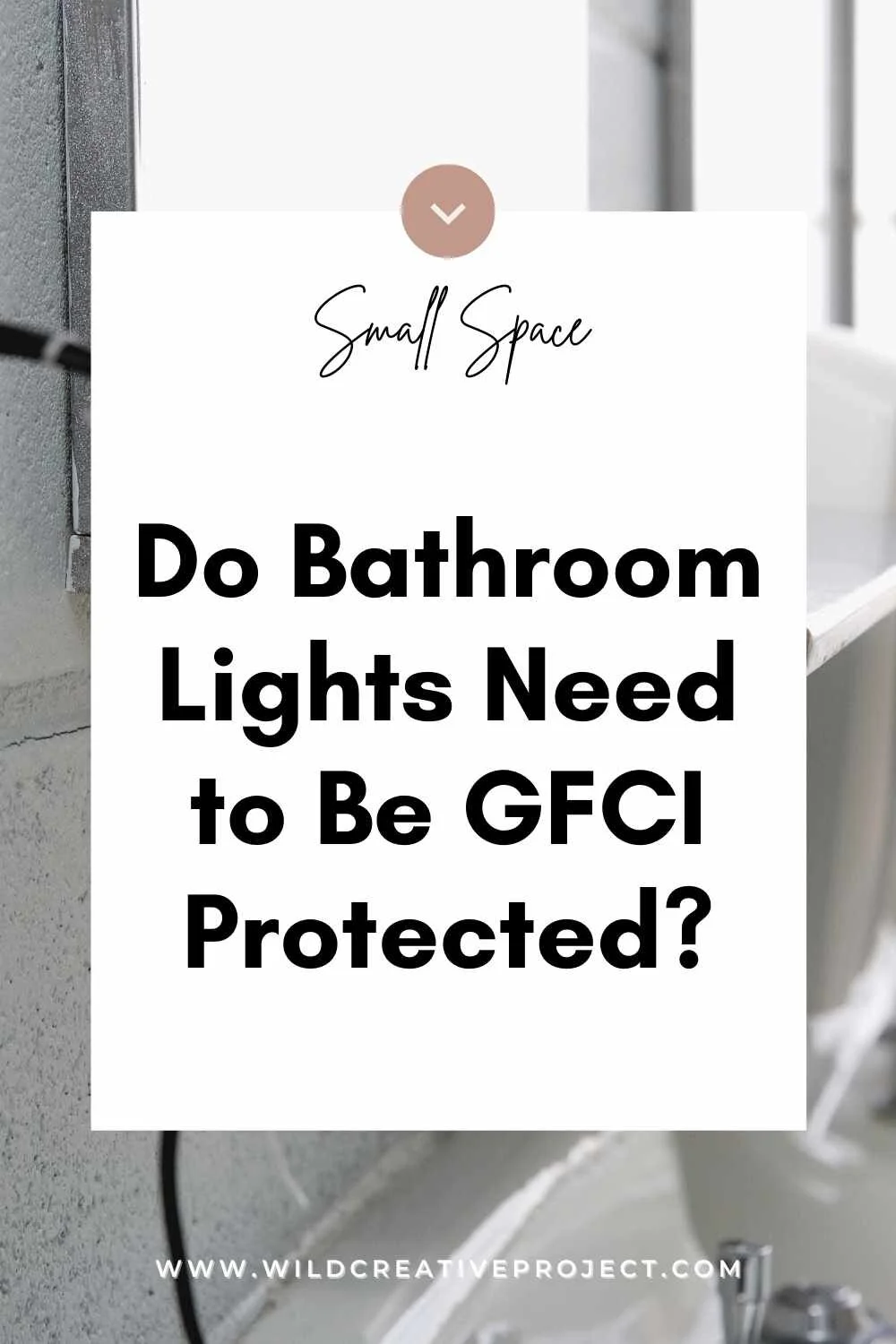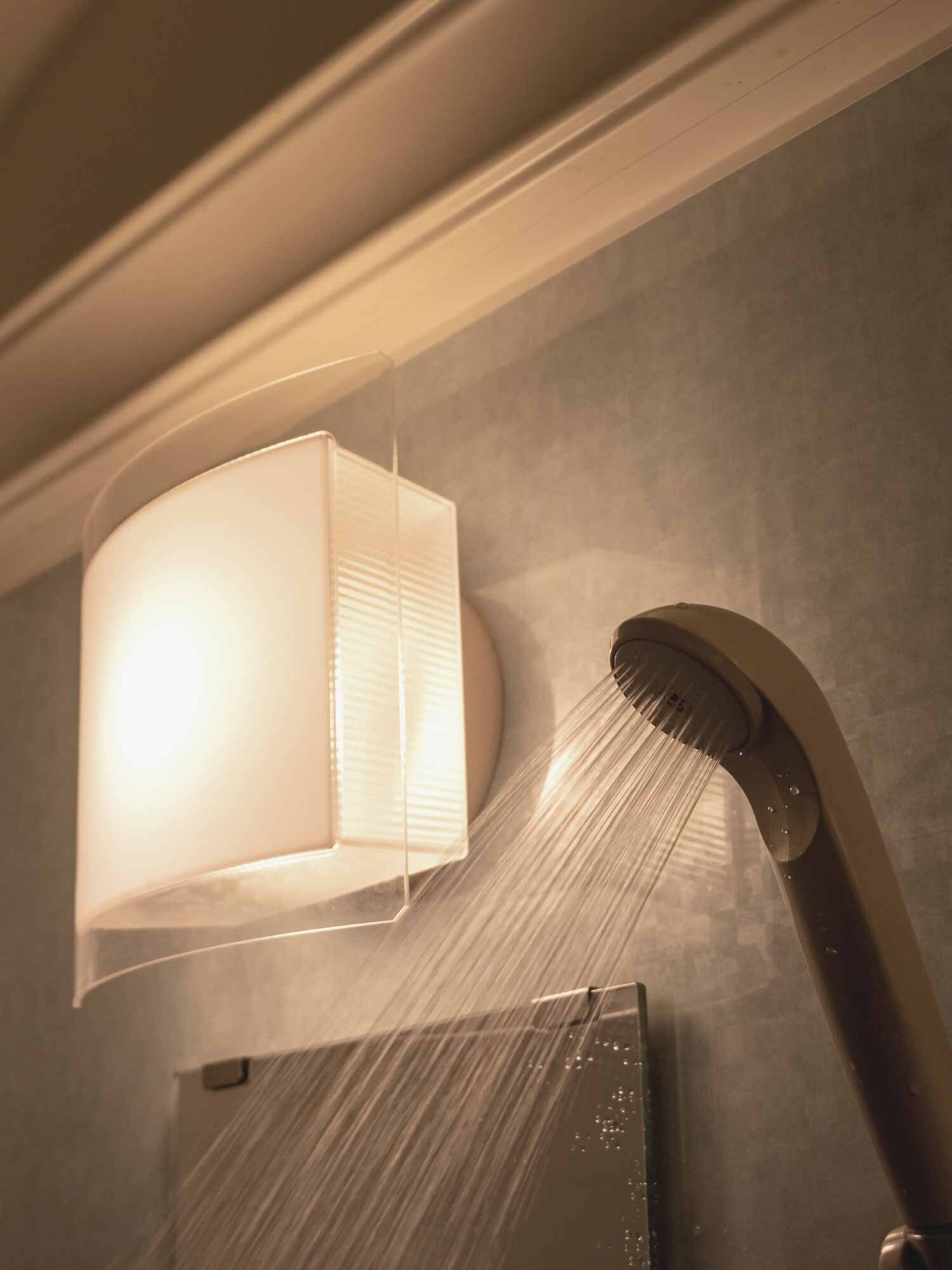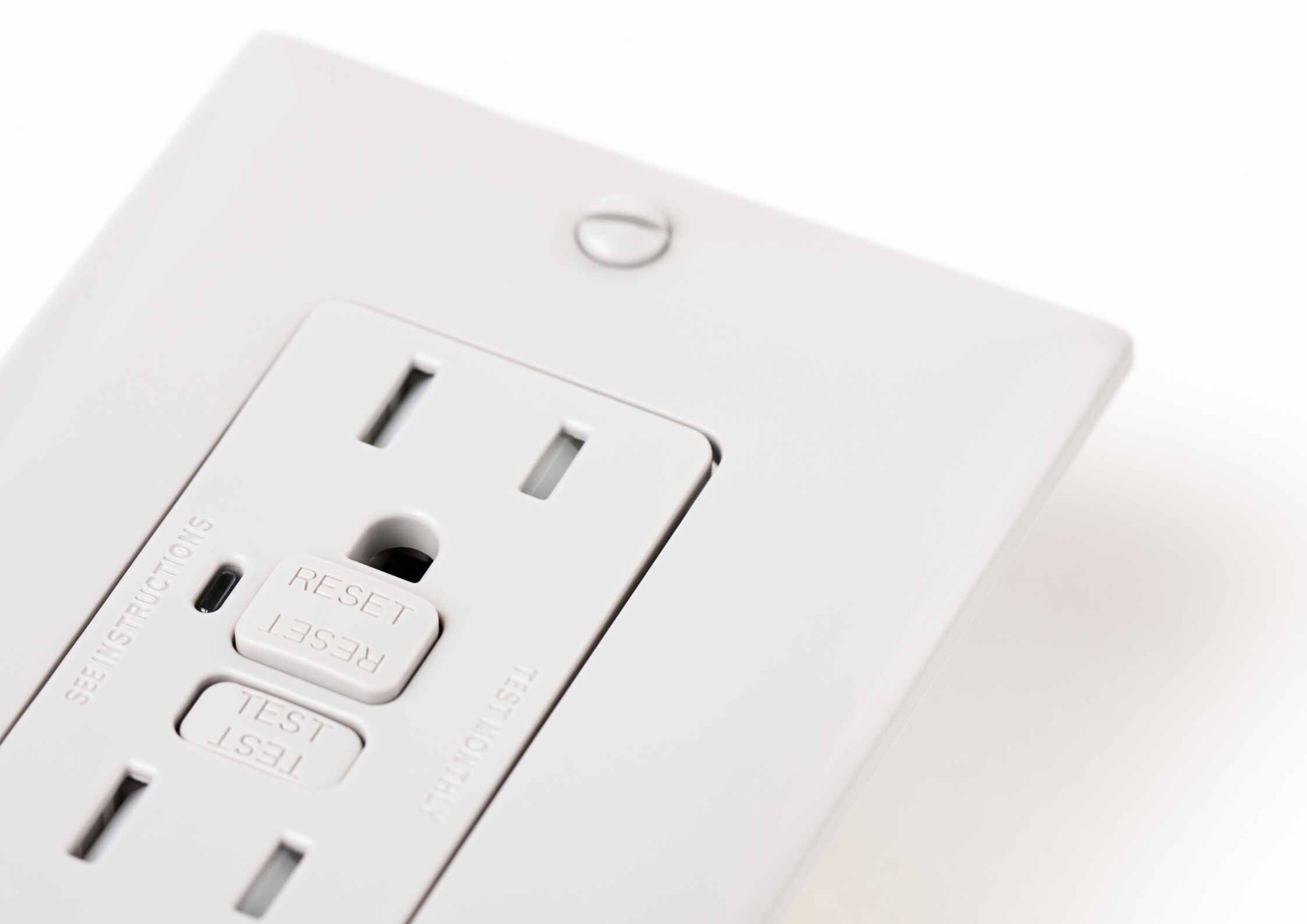Do Bathroom Lights Need To Be Gfci Protected
You might not be aware of it, but your bathroom lights could pose a safety hazard in the event that you have an electrical short.
This is because GFCI (ground fault circuit interruption) protection is only required for outlets and switches, not light fixtures unless they are above the shower area.
If you are anything like me, this poses a huge concern as I would rather be safe than sorry!
You may be wondering if there is anything you can do about it. Well, luckily there is.
One way to ensure your bathroom lights are safe from electrical shocks and potential fires is by installing GFCI protection on them.
In this article, we'll discuss what GFCI protection is and why it's necessary for bathrooms. Read on to find out more!

What Are GFCI Outlets?
Let's start off with a quick review of what GFCI protection is.
A ground fault circuit interrupter (GFCI) is a safety device that can save lives. It tells if there's an imbalance of electricity and turns off the power to that outlet so it will not be broken.
If your GFCI receptacle is at risk of getting wet, the outlet will instantly shut down to stop any potential damage BEFORE it begins.
GFCI does this by monitoring the flow of electricity through the bathroom circuits. If there is any interruption of the current flow, it will throw an error code and shut down automatically.
For example: If there was water on the ground that was then picked up by a piece of metal and sent through an electrical cord into the wall, this would create an imbalance in electrical current.
If you do not have GFCI protection, you could get electrocuted if you touch the water or metal.
If there is a GFCI outlet near this scenario, it will sense the imbalance and shut down to prevent any potential electrical shock. GFCI is a very common safety feature, so you should have it in your bathroom anyway!
Do All Outlets in a Bathroom Need to Be GFCI?
As mentioned above, GFCI protection is required for any electrical outlets or switches that are in the area where you could get wet while using your bathroom.
This includes the bathtub area, sink area, and shower stall.
However, do not assume that just because you do not use these areas at all times that you do not need to worry about GFCI protection.
The code requires that all bathrooms have at least one GFCI protected outlet (And many people choose to install 2 or 3 as a good precaution).
It's your choice how many outlets you want, just make sure there is ALWAYS ONE not only in the bathroom but also near where water enters the house.
You can protect yourself from shocks by using a GFCI circuit breaker in the electrical panel or installing GFCI outlets.
You'll need to make sure that if you're only using one outlet for protection, it has "multiple location" wiring so it will be able to provide shock protection all throughout your house and not just right at the single GFCI outlet.
Why Bathroom Lights Need GFCI Protection
The National Electrical Code (NEC) does not require the installation of GFI circuits to cover all outlets within bathrooms as long as they are rated damp or wet;
However, if your fixture includes switches that need protecting from current flow, there may be an option to install both a wall switch AND a breaker box outlet on your home's exterior walls.
But do lighting fixtures need to be GFCI protected?
This depends on the type of light fixture that's over your bathtub or shower.
If it is a recessed light, fluorescent fixture, incandescent lighting, or any other form of electric lighting in your bathroom that is not waterproof, it does not require protection unless you do it voluntarily.
When you do not have GFCI protection in your bathroom, the fixtures do NOT do anything to prevent electrical short. This means that there is a risk of shock or fire if things get wet.
One spark could be all it takes for a small fire to break out and start burning.
Bathrooms do have plumbing, meaning that they are usually moist and full of water.
This means that there is always a risk for a short circuit if you do not take the proper precautions. Electrical shock can also cause serious injury or death.
Installing GFCI protection on your bathroom lights will ensure that everything is safe no matter what happens.
These days, it's not uncommon for manufacturers to require GFCI protection on bathroom lighting fixtures that are over the footprint of a shower or tub. This is so if you ever trip the outlet within a shower or tub then your lights will still be working when they are needed most.
If you do not do this, there is a chance that your house could burn down if something goes wrong. Installing GFCI will provide the necessary protection to help prevent electrical shorts and potential injuries.

What Special Rating Is Required for the Light in the Bathroom?
You may not think about it often, but your light fixtures in a bathroom have to withstand harsh conditions.
Bathrooms are damp and wet places - you're bound to get water everywhere with all that bathing!
But even if they're installed near hot tubs or a shower stall, there's only an expectation for "damp" rated lights.
Bathroom lights are not required to have a special rating. But it is recommended for those with direct exposure to moisture.
Light fixtures for these places are broken up into two locations: damp locations and wet locations.
Damp-rated lights are a fantastic option for areas where condensation may be present. You can use them in bathrooms (not showers), covered patios, saunas, or in any other damp environment.
On the other hand, wet-rated lighting is used in places with direct exposure to water such as the shower area.
Any light fixture in either of those zones (especially the shower zone) should carry at least one of these ratings. If you have a shower, it's important to make sure the shower light is rated for wet locations.
If your ceiling-mounted light doesn't carry this rating, then it may not be able to withstand shower spray from people standing under it.
Related: Design Hacks for a Small Bathroom Without a Window
How to Tell If Your Light Fixture Has a GFCI Protection
If you do not already have GFCI protection in your bathroom, it is important to do the right thing and protect yourself.
For this reason, it is strongly recommended that you evaluate each light fixture to see if they have GFCI protection or not. This process should take only a few minutes of your time.
All you need to do is follow these simple instructions.
For most light fixtures, GFCI protection will be the little black box near the outlet or switch.
These will have a test button on them that you can use to check if they are working properly.
When the GFCI outlet is tripped, it's not time to panic. The "reset" button will reset (or turn on) the circuit if you have an issue with power flow in your home.
If your lights do not have this small device with a test button, do not worry! It does NOT mean that your lighting is unsafe or unprotected. Instead, it just means that they do not have GFCI protection and do not need to be upgraded.
This includes lights that do not get wet in the bathroom, such as a vent fan or overhead lights.
Checking Your GFCI Device
To check if your outlet does have GFCI protection (and whether you need to upgrade them), do the following:
-
Look for a little black box with a "TEST" button (some use a white color).
-
Push the "TEST" button to turn off the power. The "RESET" button should pop out when you do this.
-
To check if the GFCI is working, plug in an electrical device (such as a night lamp). The night lamp should not turn on.
-
Some receptacles come with a light indicator. If it turns green, your outlet is safe. Your GFCI protection will do its job if there is an electrical short.
-
If you need to put the power back in, just press the "RESET" button.
Experts recommend that you check your GFCI outlet at least once a month.

How do I GFCI Protect my Bathroom Lights?
The best way to do this is by hiring a licensed electrician.
If you do not have the extra money for this and you don't have enough knowledge or experience, do NOT do it yourself.
You can feed the bathroom lights you want to protect on one dedicated GFCI circuit—— with its own GFCI breaker for added safety.
These items cannot be protected through another outlet they're not directly plugged into (like if you were plugging them into an existing non-GFCI receptacle).
You'll want to get it professionally installed since there are lots of live wires involved.
In order to be safe, you need to take precautions in each room. You should go ahead and create a new circuit for the GFCI protected bathroom lights.
As well as creating a separate circuit at the panel for non-GFCI protected bathroom lights and outlets so that they are all guarded against potential danger when using them simultaneously with other items (like hair dryers or electric toothbrushes plugged into another wall socket nearby).
If you have a circuit with both the lights and certain receptacles on them, tripping one of these bathroom outlets will cause your lights to go out. This is because GFCI's are not designed for this purpose.
Alternative Ways to Protect Against Electric Shock In the Bathroom
As a safety precaution, there are steps that you can do to keep your home safe from potential electrical shock when using bathroom lights in the shower or bath:
-
Use a GFCI protected extension cord.
-
Cover your bathtub and shower in rubber mats.
-
Put the bathroom light fixture outside of the shower or bath.
These do not guarantee safety, but they do reduce the risk as much as possible! If you do not have an option to do this yourself, then consult with a professional electrician who can do the work for you.
Does a Bathroom Exhaust Fan Need to Be GFCI Protected?
Do you have a bathroom ventilation fan in your house? If so, did you know that the area right above it is at higher risk of contact with water than most other parts of the room?
Despite the National Electrical Code (NEC) not requiring a bathroom exhaust fan to be GFCI protected, many manufacturers will require it in their installation instructions if they are installed over bathtubs or showers.
Related: How to Vent a Windowless Bathroom
It's not something we think about too often but when you install your fan, it should be protected by this type of circuit breaker to avoid any possible electrocution or fires from water contact.
This area right above and around your tub (or in-shower) is at higher risk because they're high up and closer to where you could splash water onto it while bathing, showering, or cleaning your hair.
Just do yourself a favor and get one to avoid any potential issues in the future. (It may be required by manufacturer installation instructions, but it's not really a hassle for you!)
Does Every Bathroom Need a Dedicated Circuit?
As a rule, there must be a 20A circuit assigned to bathroom receptacle outlets. However, this does not mean you have to separate circuits into every single bathroom.
A single circuit can supply multiple rooms as long as bathroom receptacles are the only ones supplied.
Lighting outlets in other rooms cannot use the same circuit as it will overload and trip the breaker or fuse box. (The same applies to other outlets in other rooms.)
But there is an exception.
The code had a single exception that allowed for outlets to be supplied from the same circuit as their accompanying bathroom. However, an additional requirement was added in order to take advantage of this exemption.
You can use a single circuit to supply a lighting outlet or a fan as long as you add an additional circuit for every new bathroom.
Does a Bathroom Need a Dedicated Lighting Circuit?
A dedicated circuit is a great idea for bathroom lighting. That way, if one of the lights in your bathroom has any issues with power, you do not run the risk of sending current to other parts of your home that could be damaged by it.
Aside from being an important safety precaution, installing a full circuit dedicated to just your bath and lighting fixtures can do a lot of other great things, too.
-
The lights will be on all the time.
-
It may prevent overloading and blowing a fuse in your main breaker panel if you have many people taking showers or baths at once.
Make sure to talk with an electrician about creating a dedicated circuit for your lights so you can do everything safely and correctly.
Final Thoughts
GFCI outlets are designed to protect against electric shocks.
If you're not sure what type of outlet your lights need, be aware that all light fixtures should have a rating for protection from electrical shock hazards such as the Underwriters Laboratory (UL) label or an ETL mark.
You can also contact the manufacturer and ask about their safety ratings if you feel uncomfortable installing something without one.
Keep in mind that it's important to keep bathroom lights off when not in use to avoid accidental water splashes on live wires which might cause electrocution!
If you don't want to be surprised by a sudden, potentially dangerous electrical surge in your bathroom, then it is important that all of the outlets and lights are GFCI protected.
If you found this post helpful, share it with your friends below! ↓
Pin This Post:
Do Bathroom Lights Need To Be Gfci Protected
Source: https://wildcreativeproject.com/small-space/do-bathroom-lights-need-to-be-gfci-protected








Tidak ada komentar:
Posting Komentar